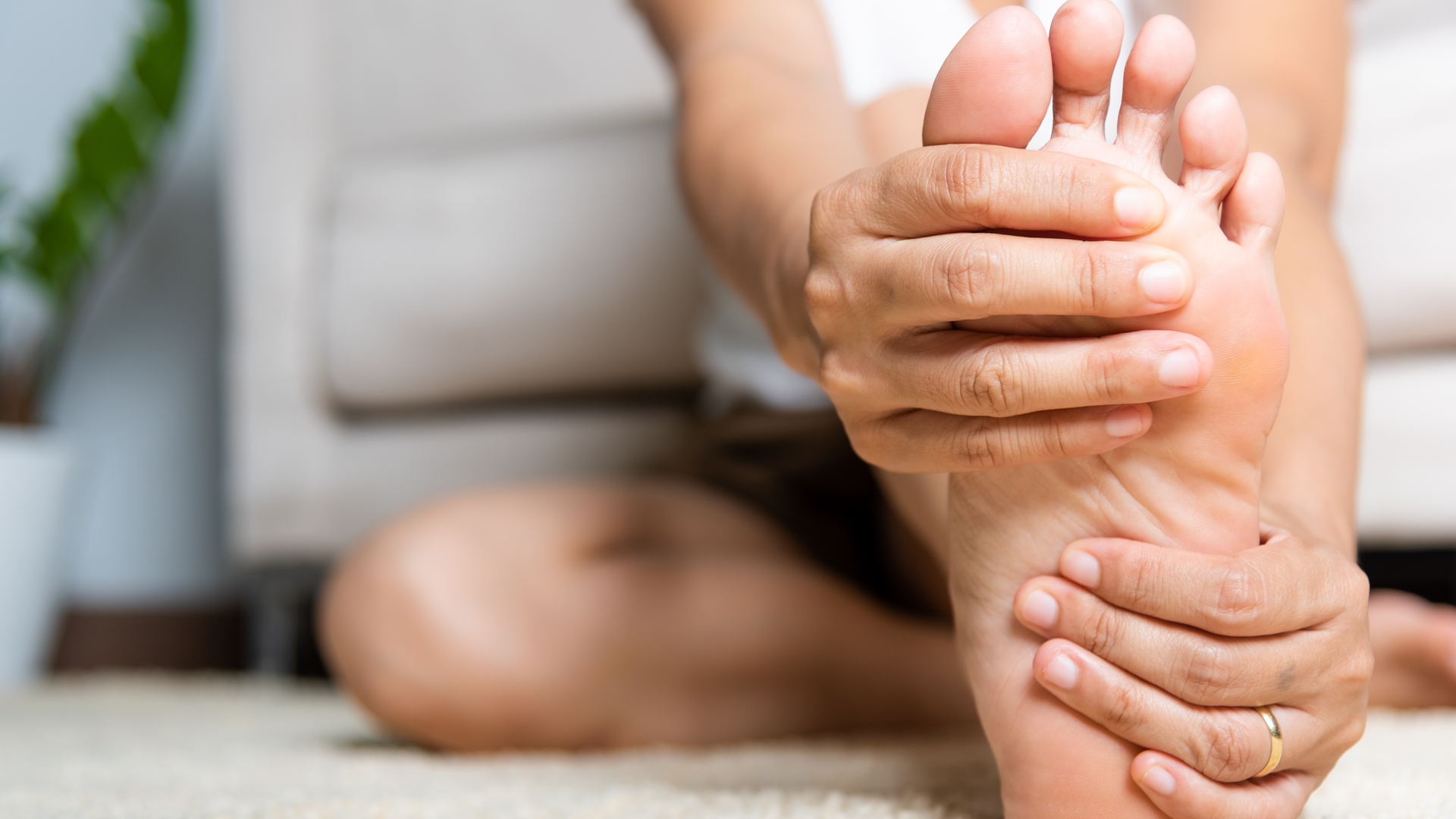A phenomenon explained - and what you can actively do about it
Almost everyone knows the feeling: you sit cross-legged for a few minutes or remain in an uncomfortable position for a long time - and suddenly your foot starts to tingle. It feels as if small needles are pricking it, mobility is restricted and sometimes you can't feel it at all for a moment. This phenomenon, known as "foot numbness", is medically known as paraesthesia - and although it is usually harmless, it can be quite annoying in everyday life.
This issue is particularly relevant in the working environment, where people often stand or sit for long periods of time. At ATLAS, we know how important it is to keep feet healthy, resilient and well supplied with blood. That's why we would like to explain what causes feet to fall asleep - and how you can effectively counteract this with simple measures.
What happens when a foot "falls asleep"?
The "falling asleep" of a foot is not a disease, but a temporary dysfunction in the nerve or blood supply. It is usually triggered by external pressure that either pinches a nerve or restricts blood flow. The result: we experience tingling, numbness or a stinging sensation - comparable to fine pinpricks.
In many cases, the so-called peroneal nerve, which winds around the fibula, is affected. Even an unfavourable sitting posture or shoes that are too tight can temporarily block this nerve. If the position is then changed again, the nerve conduction normalises - often accompanied by an intense tingling sensation or the feeling that the foot is "waking up".
The role of blood circulation
Blood circulation also plays a central role. If blood vessels are compressed over a long period of time, the affected area is no longer supplied with sufficient oxygen and nutrients. Nerves are particularly sensitive to these restrictions. As soon as the pressure is released, the tissue is supplied with blood again - and the nerves send out more stimuli, which triggers the typical tingling sensation.
When is medical advice necessary?
Occasional numbness of the feet is generally harmless. It is a natural reaction of the body to a short-term interruption of the nerve or blood supply. However, if the feeling occurs regularly, without any recognisable cause, or is accompanied by other symptoms such as muscle weakness, pain or coordination problems, a doctor should be consulted. More serious causes such as slipped discs, peripheral neuropathies or circulatory disorders may be behind such complaints - conditions where early diagnosis can be crucial.
What can help against sleepy feet?
Fortunately, there are a number of proven measures to promote blood circulation and restore nerve activity. Most of these techniques can be easily implemented in everyday life - whether in the office, on the building site or during leisure time.
Movement is the most important measure: as soon as you notice that your foot is falling asleep, stand up or move the affected leg. Simply wiggling your toes or lifting your heel can be enough to reduce the pressure and restart the transmission of stimuli.
Circling your feet, actively spreading your toes or briefly "marching" in a sitting position - i.e. lifting your knees alternately - also helps to activate blood circulation. A gentle massage or rubbing of the affected foot can also have a supportive effect. This mechanical stimulation stimulates the sensory nerves and accelerates the normalisation of sensation.
In some cases, a lukewarm foot bath or a cool cloth can also help. However, these temperature stimuli should only be used if there are no pre-existing neurological conditions, such as diabetes, in which the sensation of temperature is impaired.
Prevention: How to prevent your feet from falling asleep in the first place
The most important preventative measure is to change your posture regularly. Be careful not to sit or stand for too long - and avoid constantly crossing your legs. Unsuitable or too tight footwear can also permanently irritate the nerves or impede blood circulation.
Ergonomically designed, well-fitting shoes are a key element of prevention. At ATLAS, we rely on modern technologies, breathable materials and well thought-out design to provide optimum relief for the foot and promote natural mobility. Our aim is to develop work and safety shoes that not only protect, but also contribute to foot health.
2-minute activation routine for in between
For anyone who sits or stands a lot, we recommend a short exercise to activate the feet and legs. It only takes two minutes, can be done almost anywhere and improves blood circulation and nerve conduction.
Here's how it works:
1. mobilise your toes: Spread, curl and wiggle your toes for about 30 seconds.
2. lift your heels and toes: Alternate lifting your heels and toes while sitting or standing.
3. foot circles: Lift one foot slightly at a time and circle it first clockwise, then anti-clockwise.
4. lift your knees: Alternate lifting your knees as if you were lightly marching in a seated position.
5. breathe consciously: deep breaths promote oxygen supply and support the circulation.
You should do this exercise regularly - ideally several times a day - to reduce your feet falling asleep in the long term.
Conclusion: Take care of your feet - they carry you through life
The fact that a foot occasionally "falls asleep" is usually nothing to worry about. But if it occurs more frequently, it is a signal from the body that should not be ignored. With conscious movement, ergonomic sitting and standing positions - and above all with high-quality, foot-friendly footwear - you can actively do something for your foot health.

